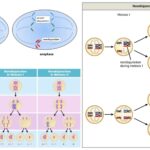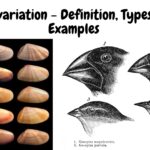AS and A Level Biology 57 Views 1 Answers
Sourav PanLv 9November 1, 2024
Explain what is meant by homologous pairs of chromosomes
Explain what is meant by homologous pairs of chromosomes
Please login to save the post
Please login to submit an answer.
Sourav PanLv 9May 15, 2025
Homologous pairs of chromosomes refer to a pair of chromosomes in a diploid organism that have the same structure, size, and gene content but may contain different versions (alleles) of those genes. Here’s a more detailed explanation:
1. Structure and Composition
- Chromosome Composition: Each chromosome is made up of DNA and protein and carries specific genes that code for traits. In humans and many other organisms, chromosomes exist in pairs.
- Homologous Chromosomes: A homologous pair consists of one chromosome inherited from the mother (maternal chromosome) and one from the father (paternal chromosome). Both chromosomes in the pair carry genes for the same traits at the same loci (specific positions on the chromosome).
2. Characteristics of Homologous Chromosomes
- Same Length and Shape: Homologous chromosomes are similar in length, shape, and the position of the centromere (the region where the two sister chromatids are joined).
- Same Genes, Different Alleles: While homologous chromosomes contain the same genes, the specific alleles (different versions of a gene) may vary. For example, one chromosome may carry an allele for brown eyes, while the homologous chromosome may carry an allele for blue eyes.
3. Importance of Homologous Chromosomes
- Genetic Variation: Homologous pairs are crucial for genetic diversity during sexual reproduction. During meiosis (the process that produces gametes), homologous chromosomes undergo recombination or crossing over, where sections of DNA are exchanged between homologous chromosomes. This process leads to new combinations of alleles and contributes to genetic variation in offspring.
- Meiosis and Fertilization: During fertilization, haploid gametes (each containing one chromosome from each homologous pair) combine to form a diploid zygote, restoring the homologous pairs. The zygote will then undergo mitosis to form all the somatic cells of the organism, each containing homologous pairs of chromosomes.
0
0 likes
- Share on Facebook
- Share on Twitter
- Share on LinkedIn
0 found this helpful out of 0 votes
Helpful: 0%
Helpful: 0%
Was this page helpful?




